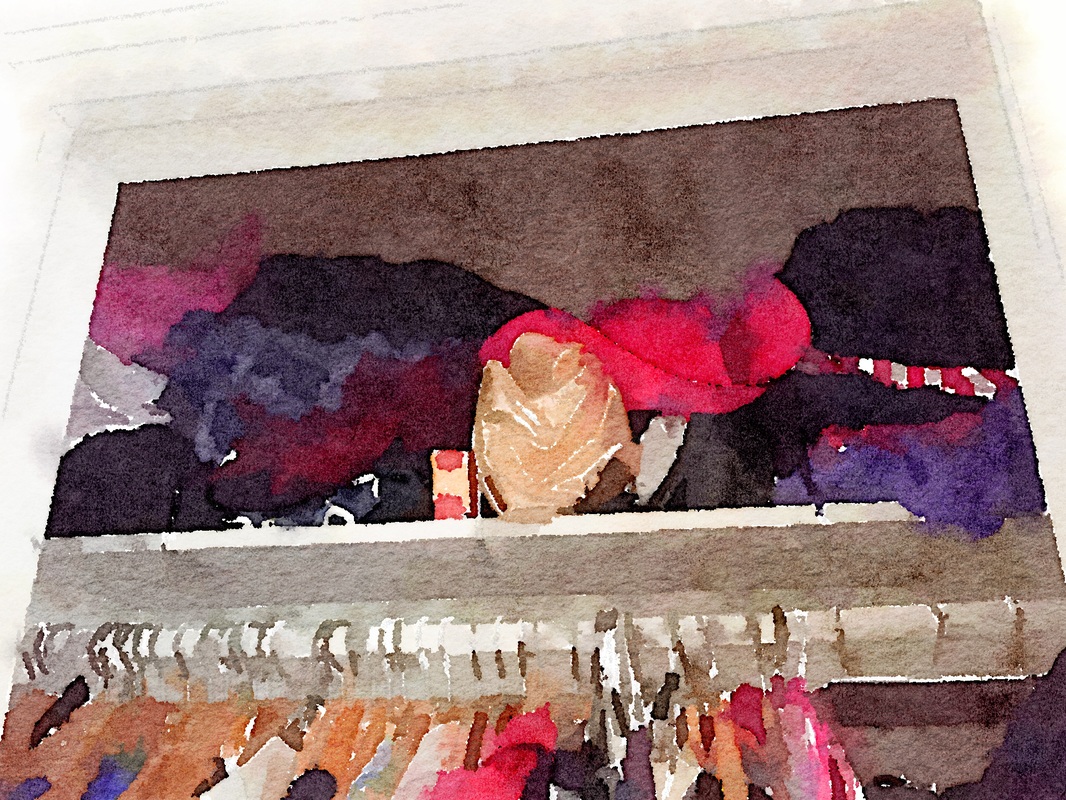 In my professional work with hoarding and squalor, I have seen a lot. I can't say I've seen everything, though, because I know there's one thing I've never seen. I've never been in a home with an empty closet. The paradoxical thing about closets is that they're meant to hide things, yet they are usually so full that most of the stuff that they're meant to hide has to be left out in the open. We use our closets to store things we never use. Then the space isn't available for our "real" stuff when we want to put it away. There's no away to put it. The clothes we really wear are either in the laundry basket, on top of the dresser, draped on a chair, or in the dryer. Meanwhile, the closet and dresser are full of clothes that don't fit or that we forgot we even owned. The coat closet is so full of random junk that there's no room for coats or backpacks. The kitchen cabinets are so full of mismatched plastic containers and travel cups with no lids that there's no room to put all the dishes away. We rent storage units we can't truly afford because we think we don't have enough space. We use them to store stuff we can't bear to get rid of, that we think we really love, and we demonstrate that by keeping it away from our house and never using it. I live in a 728-square-foot house that was built in 1939. All the houses in our neighborhood are about the same size - or smaller - because that was the norm back then. The bedroom closet rod is four feet long, and that's supposed to be for two people. There is no coat closet. Even though this house is half the size of the house we moved into when we first got married, there's plenty of room. It turns out that even the tiniest studio apartment has room for the true necessities: toiletries, linens, a functional kitchen, enough changes of clothes for two weeks, some books, and a file of important papers. There isn't as much room for things that didn't exist in 1939, like a large-screen TV, a desktop computer, a set of every small kitchen appliance ever made, or my hula hoop collection. When our house was built, people had an average of nine outfits. They didn't have massive inventories of craft supplies or holiday decorations like we do today. Kids only had a couple of toys each. Stuff cost more and most people didn't have access to credit. People believed in these mysterious things called "nest eggs" and "life savings." They got their sense of security from their family, friends, jobs, pantries, and savings accounts, not a thick insulation of material goods. Most of us live in homes that were built more recently than the 1930s. Living space has expanded over the years, adding roughly three hundred square feet per decade. As of 2013, the average was 2600 square feet, which is more than triple the size of the house I rent today. What the heck are people doing with all that space? How do they clean it all? How can they afford the heating and air conditioning? I'm starting to think the answer is that we can't keep up with the cleaning, and it's stressing us out. We can't afford the heating and cooling, either, or the mortgage, and that's stressing us out even more. We think we need all the space, though, because it's the cultural norm and because WHERE ELSE WOULD WE PUT ALL OUR STUFF? We live in historically unprecedented ginormous houses and yet we still think we need storage units. What if we started prioritizing the home itself over the stuff it contains? What if we paid more attention to the experience of living where we do? How much of our time do we spend looking for lost items, arguing over housework, fretting over money, or grumbling about the laundry? Home should be a sanctuary. It should be a place of comfort and relaxation. Our living space should reflect our personal tastes and show that YES, this is how I choose to live! This is intentional! I have one place in all the world that I can shape to reflect my preferences. In this little corner of the world, everything is exactly the way I want it. That can't be the case when our closets are bulging and our dresser drawers are cracking. I should know; my closet rod snapped under the weight of all my clothes one day. There can be no tranquility or serenity in a cluttered, grubby house full of power struggles and money worries. The structure of the home itself teaches us that there are natural physical limits. Just as we have physical limits for sleep deprivation, thirst, and excess food consumption, our homes have limits for how many objects they can logically contain. We start by looking at the available space and using it for the obvious: our practical needs. Anything that doesn't fit and isn't a practical necessity is under suspicion for getting in the way and lowering our quality of life. Comments are closed.
|
AuthorI've been working with chronic disorganization, squalor, and hoarding for over 20 years. I'm also a marathon runner who was diagnosed with fibromyalgia and thyroid disease 17 years ago. This website uses marketing and tracking technologies. Opting out of this will opt you out of all cookies, except for those needed to run the website. Note that some products may not work as well without tracking cookies. Opt Out of CookiesArchives
January 2022
Categories
All
|
 RSS Feed
RSS Feed